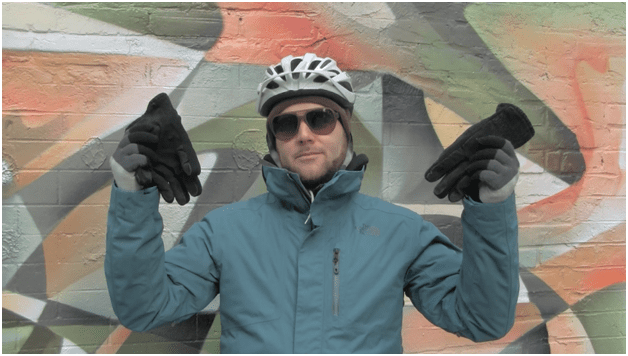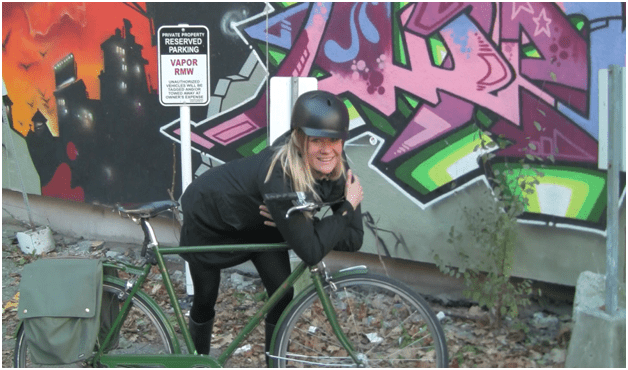When the weather turns colder and the days shorter, a lot of us (understandably) lose our enthusiasm for hopping on a bike and cycling to work. But just because the temperature’s dropped, it doesn’t mean the cycling season is over. With a few basic preparations and some know-how, you can keep your commute carbon-free for longer than you might think.
Here at Environmental Defence, lots of the team keep riding their bikes deep into the winter months. So, we asked a couple of our campaigners to give us the top tips for cold weather cycling. This is what they came up with.


1.Wear two pairs of gloves
Wearing two pairs of gloves helps make cold weather rides more comfortable. Your fingers are the part of your body that will get cold first and warm up last, and having that double-layering for extra insulation is the most effective way to keep them warm.
2. Protective eyewear
Wear protective eyewear, even if it’s just sunglasses. Some people wear full-on ski goggles when the wind is up, but for most days sunglasses are enough to just keep the worst of that cold weather out of your eyes. Visibility can be worse in general in the winter so it’s best to minimise this issue as much as possible.


3. Wear layers
Obviously, we all know you have to wrap up warm when it’s cold outside, but instead of wearing one super warm coat, it’s better to wear layers. Believe it or not, once you get cycling you will warm up quickly, and you want to be able to remove or unzip layers easily as you go along.
4. Don’t panic if you hit black ice
When cycling in the winter, it’s important to be aware that ice is worse than snow. People tend to worry about how they’ll make it through on a snowy day but the bigger issue is hitting a patch of black ice which you might not have noticed until it’s too late. If you do hit some black ice, don’t panic. Try not to hit the brakes or try and swerve out of it as this increases your chances of spinning out. Just keep going straight and at a steady pace until you reach the other side.


5. Show your bike some love!
Don’t forget to give your bike some love! All that moisture and road salt really can wreak havoc with your chain, and without due care can lead to rust damage. You can use an old dry dish brush to try to clean it off after use. Making sure that it’s well lubricated with proper bike lube is also super important – remember, WD40 is NOT a lubricant and will actually dry out your chain!
BONUS TIP! Use routes that are well maintained
It’s super important to stick to routes that are well maintained. In the winter it can be best to stick to the main arteries of the city, as these are the first to be cleared each morning and will make for a safer ride. Of course this means that your route will be busier with other traffic, so make sure you’re extra vigilant.
So these are our top tips for cold weather cycling! One more point – give it a try. You might find that it’s not as bad as you’d thought.
Carbon emissions from transportation are a major contributor to our overall carbon pollution here in Canada, so the more journeys we can take that don’t involve (non-electric) cars the better off we’ll all be.
If you want to learn more about other ways you can lower your carbon footprint, check out yournextchoice.ca and sign up.






